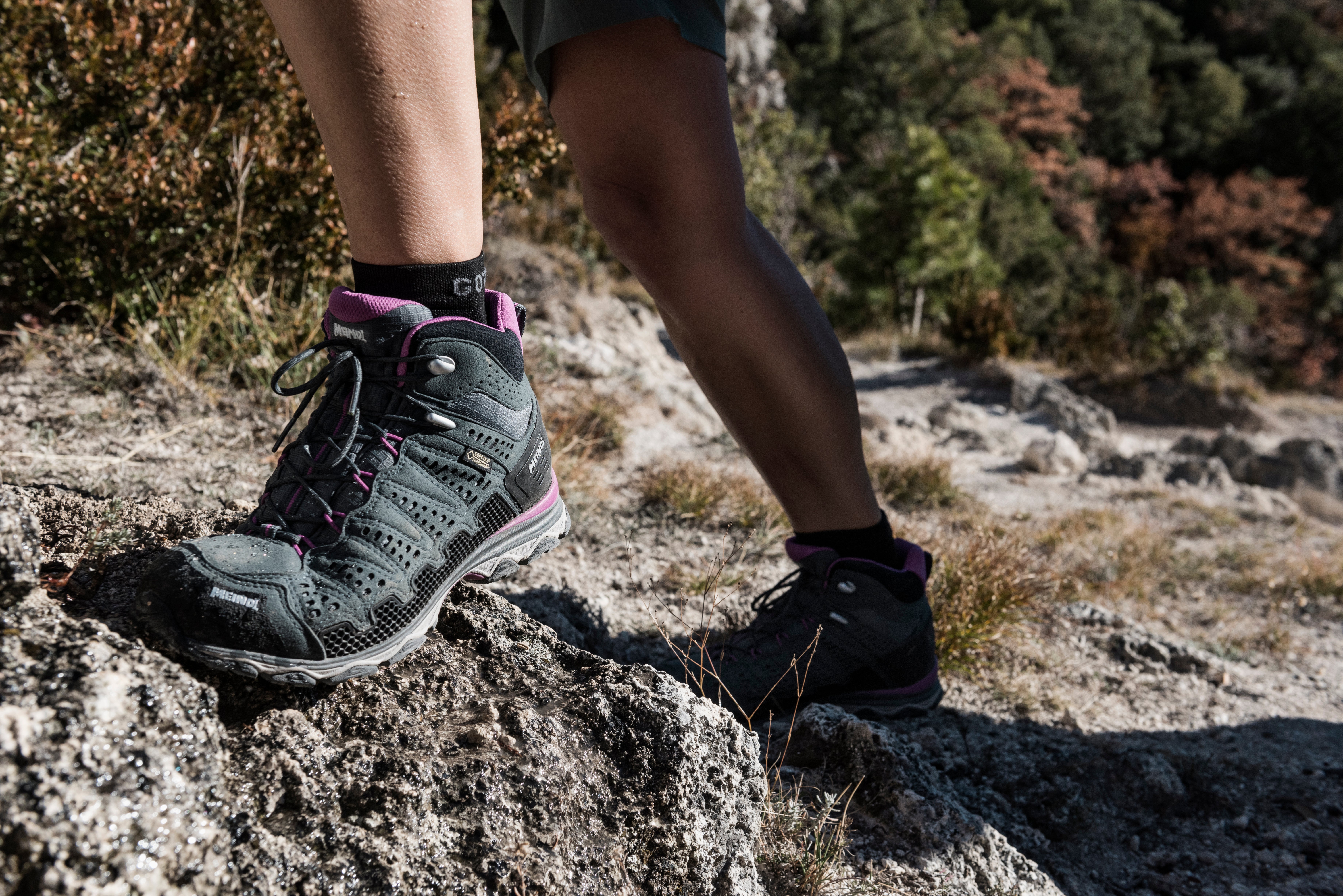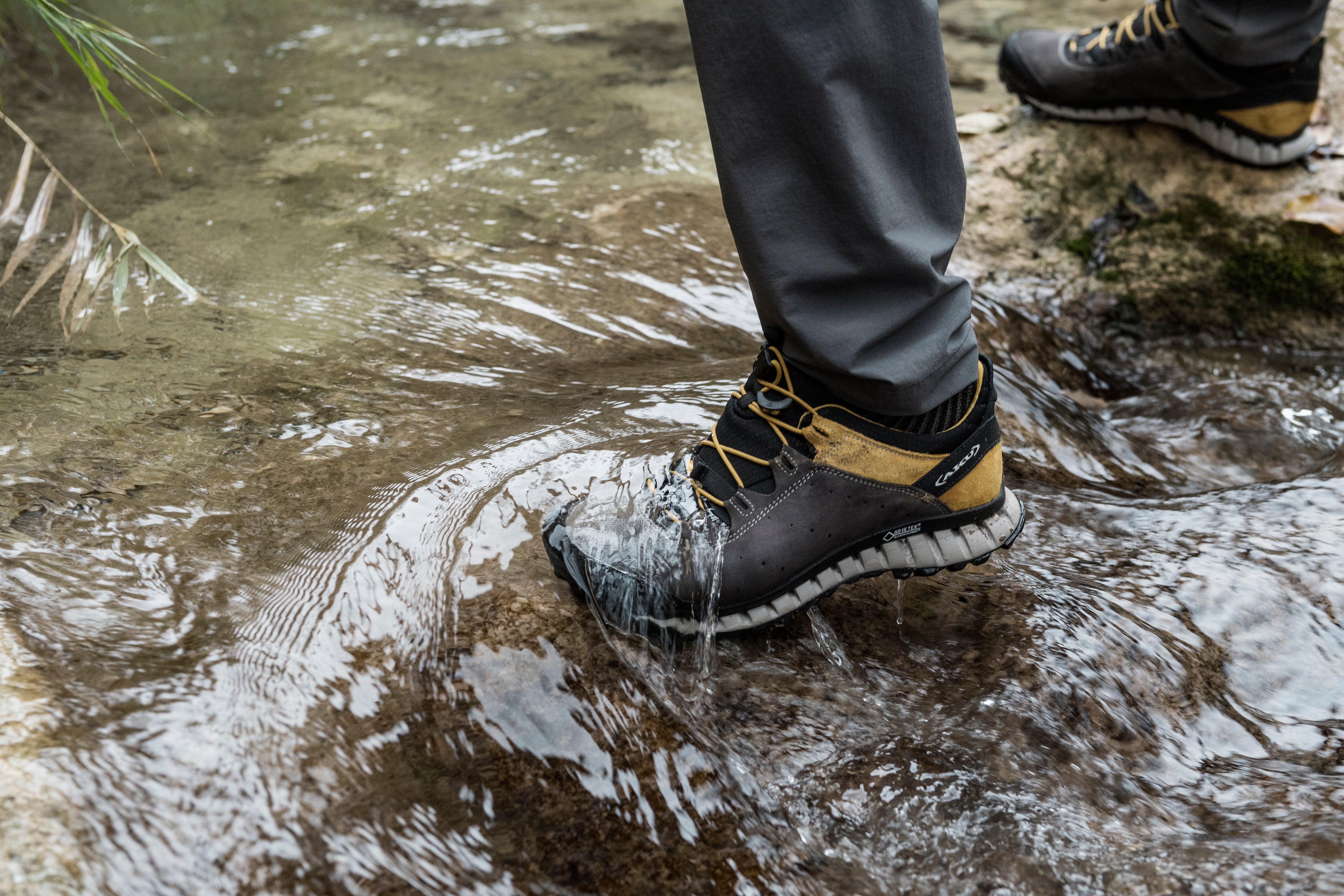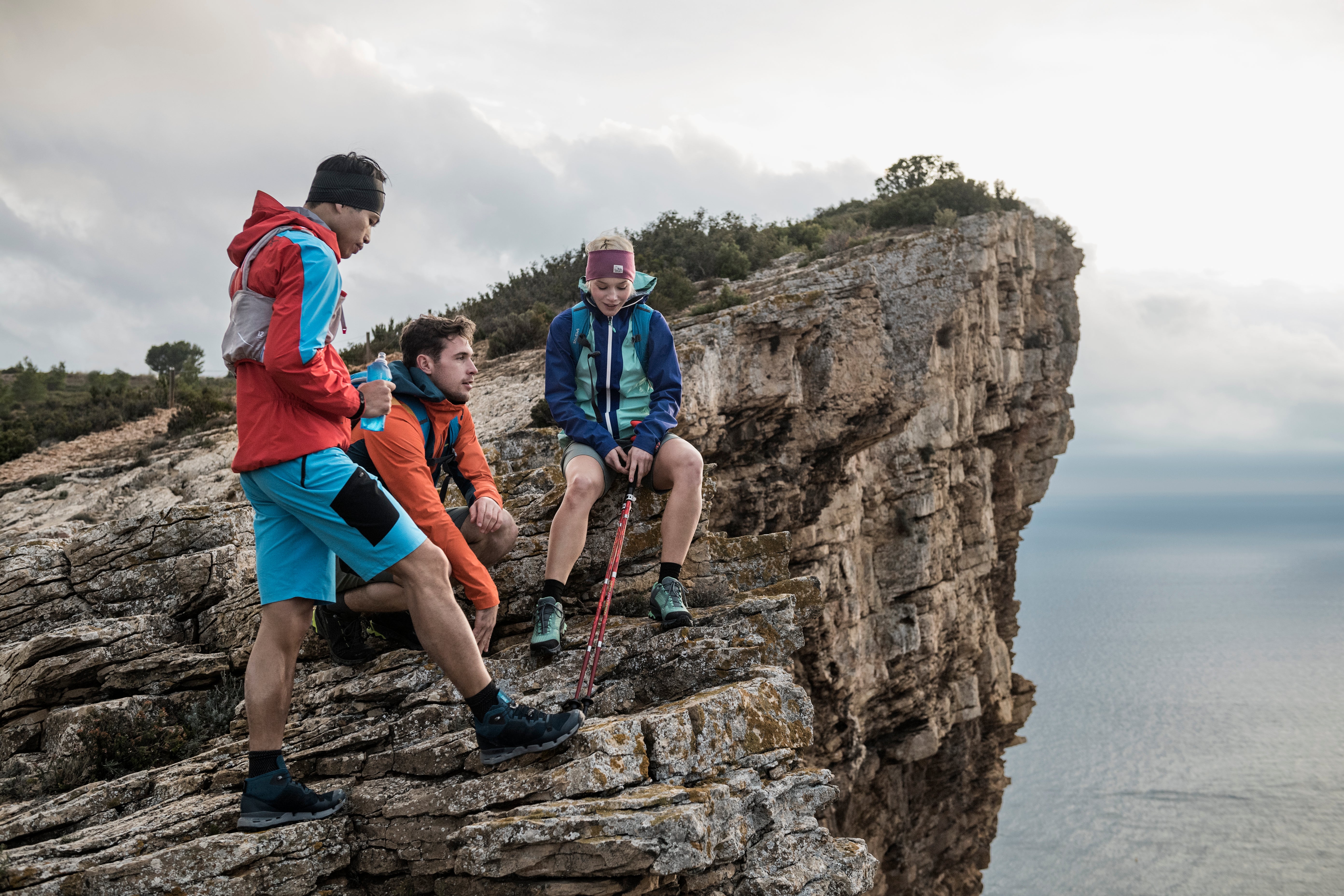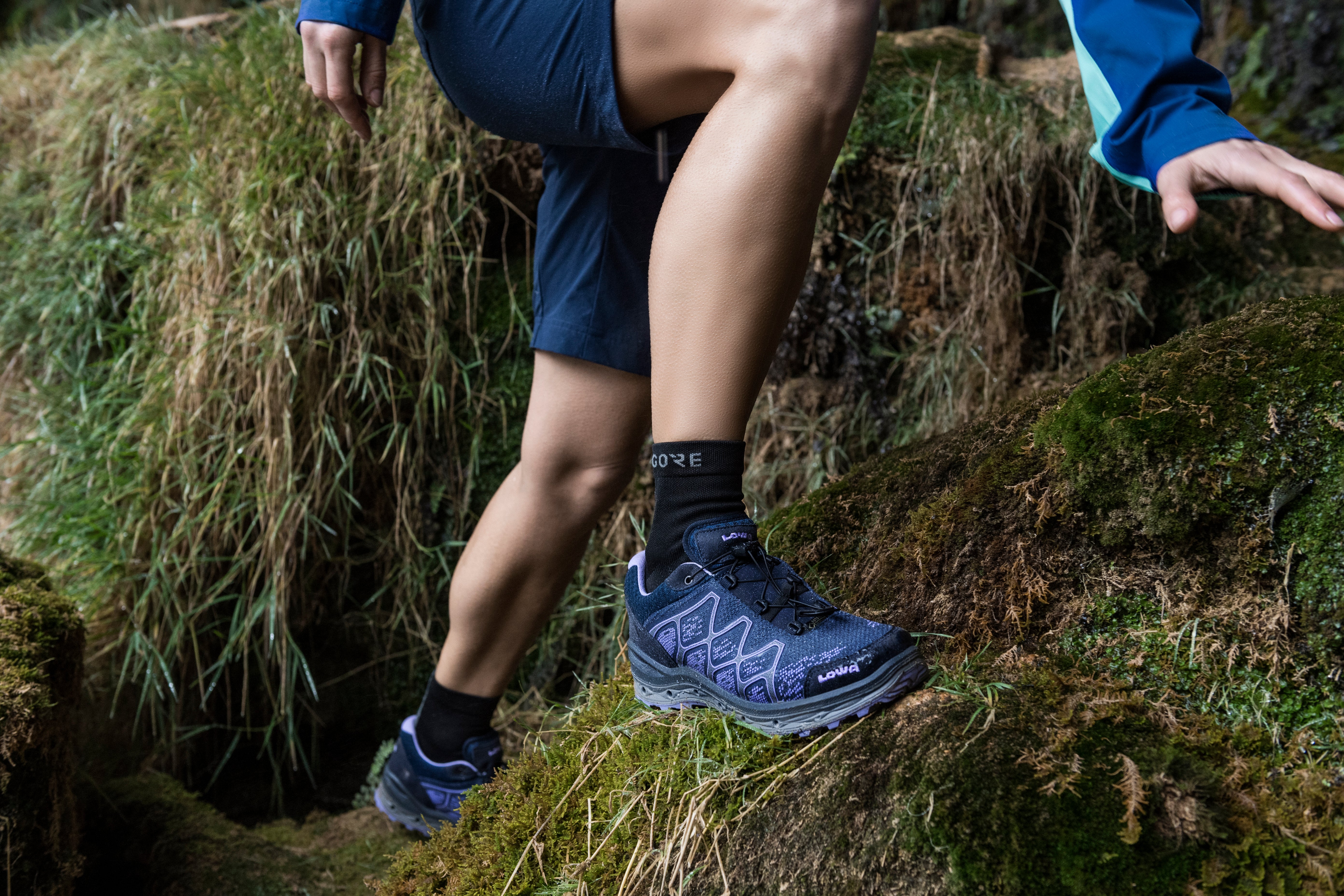We know the vast range of hiking boots for women and men out there can be daunting. Hopefully, the tips and advice we’re sharing here will be just what you need to make sure you choose the right boots for your planned routes.
And trust us, it’s worth putting in the time to research. After all, this purchase is going to support you, all being well, for years’ worth of exploring. So get ready to (virtually, at least) tie and untie some laces. We’re going on a whirlwind tour of the four must-haves to make the right decision.

1. The right support
Hiking boots and shoes offer lots more support and function than sneakers. This is essential when you’re walking on uneven, possibly unstable – maybe even dangerous terrain. But because the kind of support you can get varies, your first step is working out exactly what you need for the route you have planned.
Do you need an extra robust midsole construction that can offer better protection against roots, sharp stones, and other obstacles? Or hiking boots with higher ankle cuffs, that will hold your foot and ankle in place more securely, giving better support against twisting and spraining? Think about the kinds of situations you’ll be hiking in, then check to make sure that your foot will be supported and protected in the boots you’re looking to buy.

2. The right water protection and climate comfort
Thinking about hiking in waterlogged, muddy conditions? Through streams, or in heavy rainfall? Like all products in the original GORE-TEX products range, GORE-TEX footwear keeps water out of your boots, while also allowing sweat vapor to escape through the GORE-TEX membrane. This breathability helps keep you moving for longer.
If you’re looking for some of the best waterproof hiking boots out there, then boots with GORE-TEX SURROUND® product technology are durably waterproof, windproof, and extremely breathable—channeling heat and moisture away from the foot in every direction.

3. The right weight
Weight matters: after all, it’s you that has to carry these boots every step of the way. Lightweight textile upper hiking boots and trail hiking shoes tend to be more comfortable straight out of the box, and won’t weigh you down too much. While leather upper shoes and boots are a bit heavier, last longer and offer better support, they tend to take some breaking in—so don’t take them straight from the store on a three-day trip.
As with most things, it’s all about finding the right balance for your specific needs. Try on a few pairs at your local store. Walk around the store. Climb up any stairs they have in that store!

4. The right fit
The boot needs to hold your foot in place and not let your heel raise up as you take a step. Also, your toes should have a bit of wiggle room, so they don’t hit the front of the boot as you go downhills.
Pro tip: try on your hiking boots later in the day, when your feet are a bit warmer and swollen from walking around. This replicates how your feet will be when you’re out on the trails.
Not that complicated, right?
So, next time you’re in the store, keep these four things in mind. Try on some hiking boots for men or women—and keep trying them on—until you find the perfect support system for your feet. Then you’ll be ready to stomp through forests, around lakes, over mountains, and go further than you’ve ever gone before.





